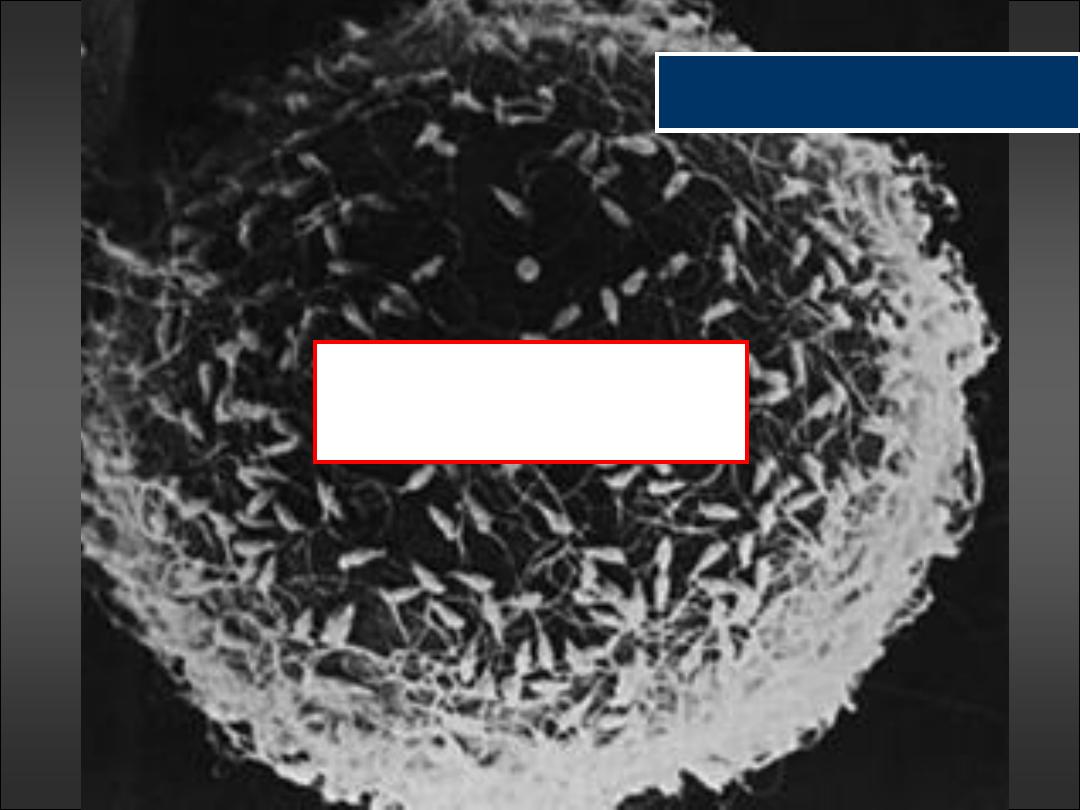
Slide 1
Oogenesis
Dr. Sumeya
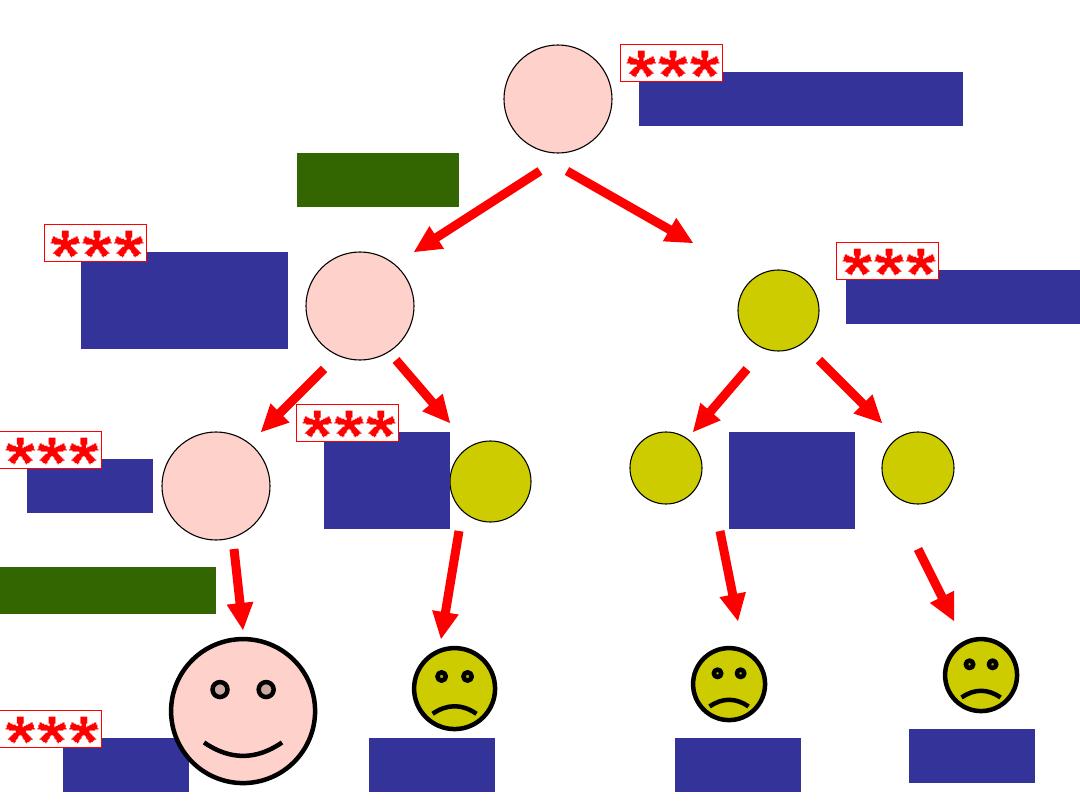
Slide 2
Primary Oocyte
Secondary
oocyte
2N
1N
1N
1N
1N
1N
1N
Meiosis
morphogenesis
Polar Body
Ootid
Polar
body
Polar
bodies
1N
Ovum
Die
Die
Die
Oogensis
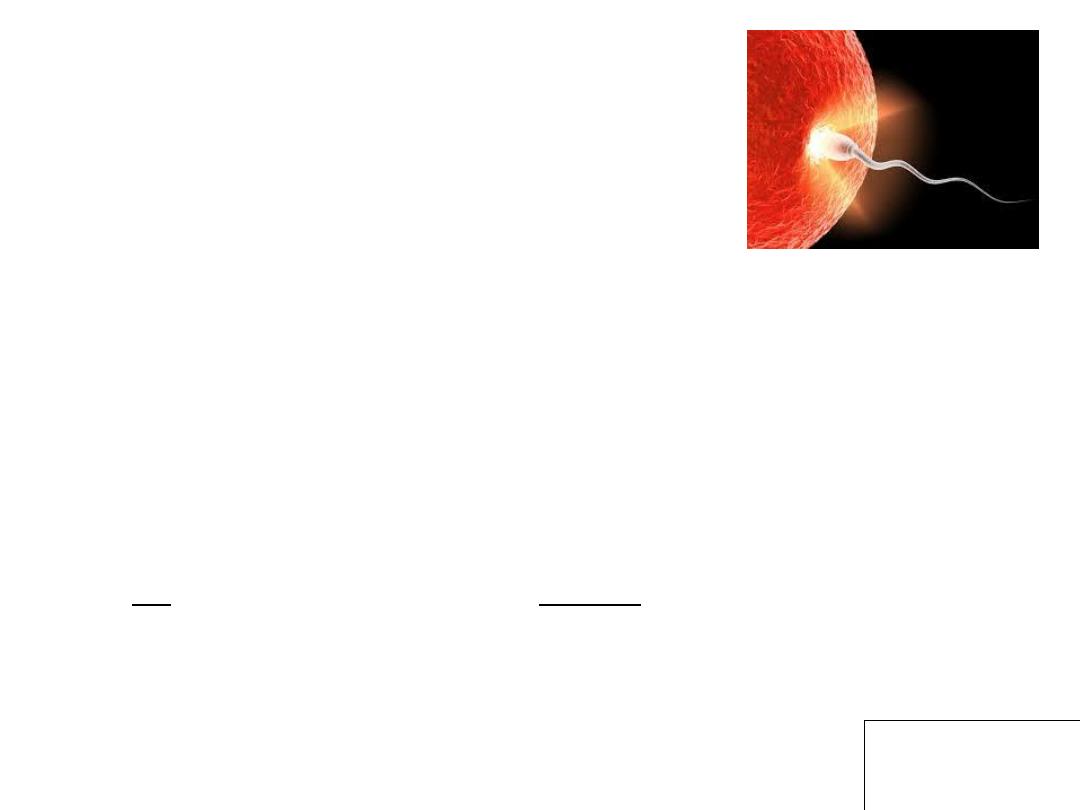
Slide 3
Oogenesis
Is the process whereby oogonia differentiate into mature oocytes.
Maturation of Oocytes Begin Before Birth
• Once PGCs have arrived in the gonad of a genetic female, they
differentiate into oogonia .
• By the end of the third month: they are arranged in clusters
surrounded by a layer of flat epithelial cells(follicular cells) originate
from surface epithelium covering the ovary .
• All the oogonia in one cluster are properly derived from a single cell.
• Oogonia: majority: continue to devide by mitosis.
some: enter meiosis and arrest their cell division in prophase
MI forming primary oocytes .
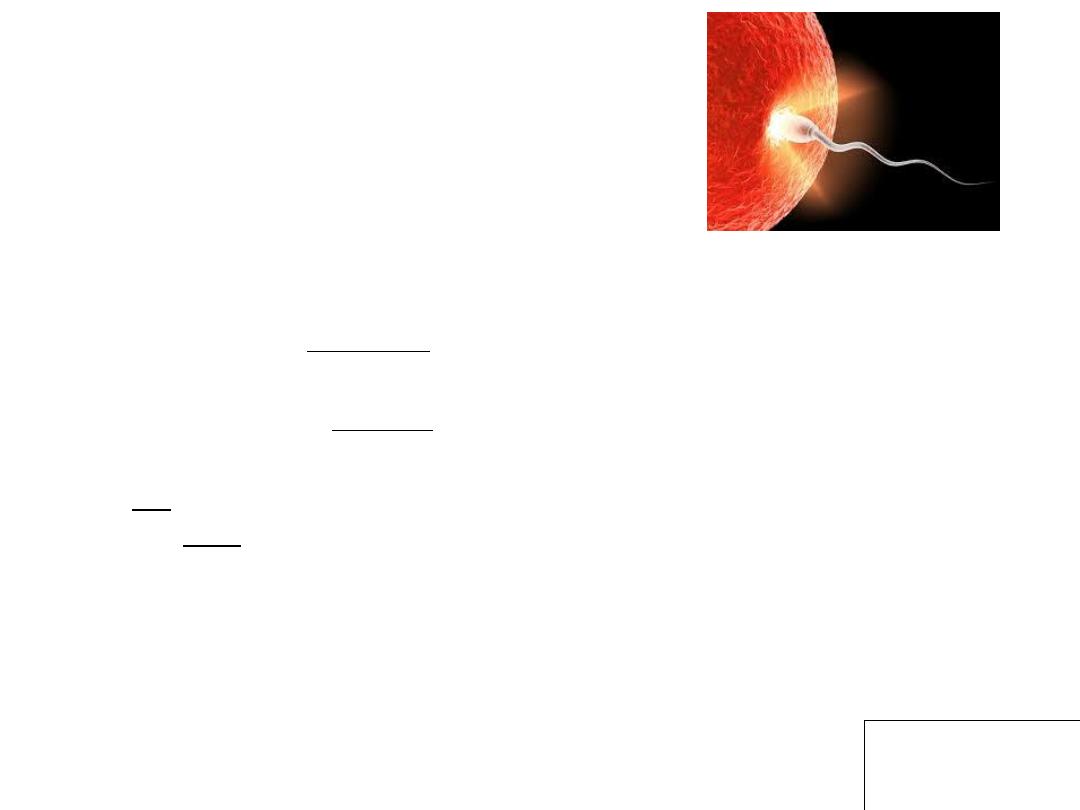
Slide 4
• 5
th
month: total number of germ cells(oogonia + primary oocytes)
reach maximum(7 millions) .
•
At this time: cell death begins leading to many oogonia and primary
oocytes degenerate and become atretic .
•
7th month: the majority of oogonia ----- degenerate except few near
a surface.
• All surviving primary oocytes ------ entered prophase of miosis 1 ,
and most of them are individually surrounded by a layer of flat
follicular epithelial cells.
• A primary oocyte, together with its surrounding flat epithelial cells, is
known as a
primordial follicle
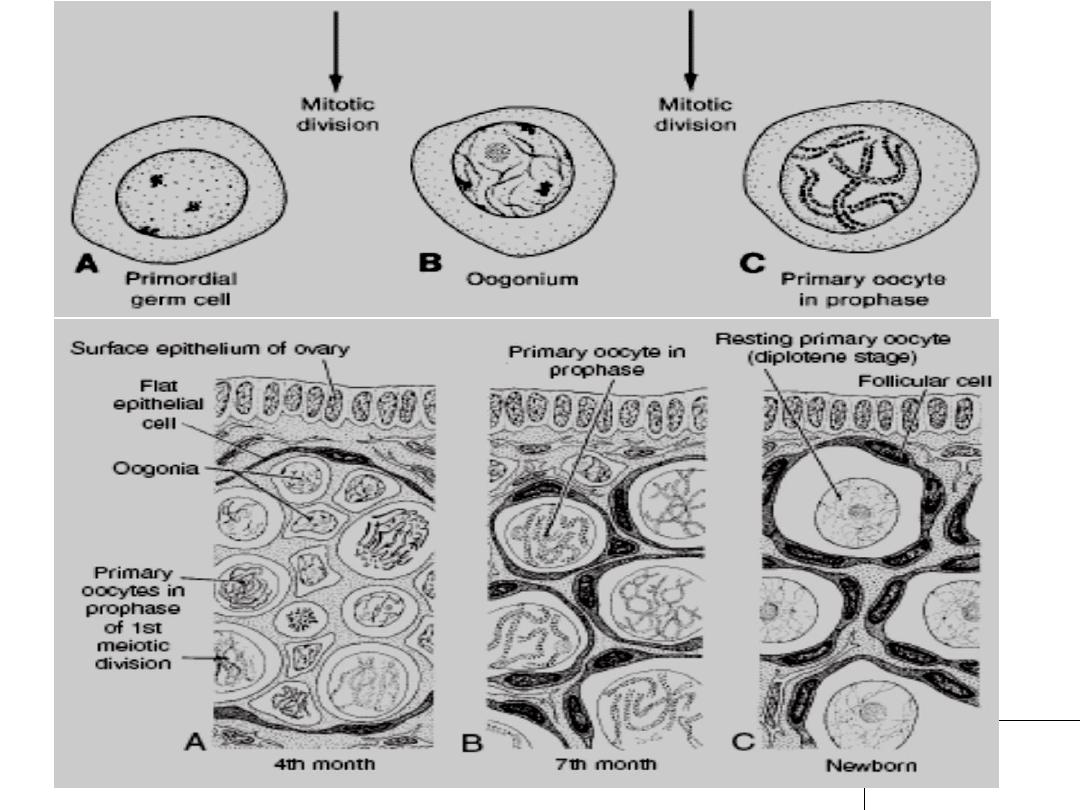
Slide 5
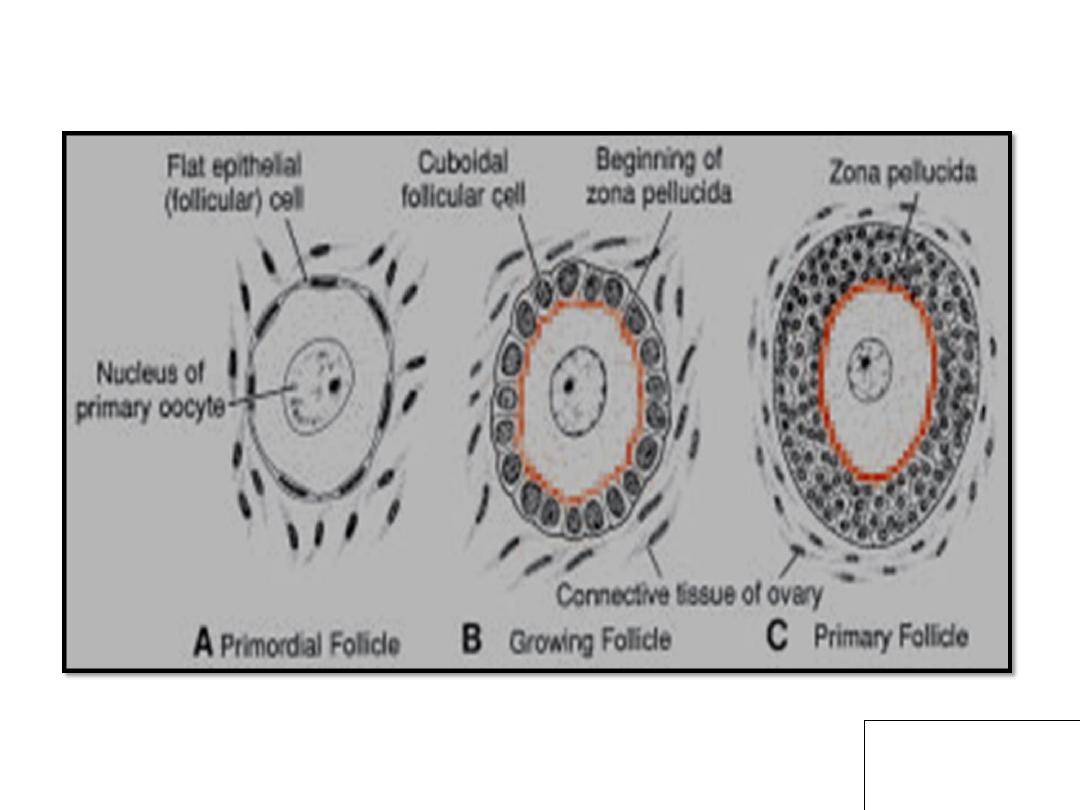
Slide 6

Slide 7
Maturation of Oocytes
Continues at Puberty
• Near birth time: all primary oocytes ------- started prophase of
meiosis I, but instead of proceeding into metaphase, they enter
the
diplotene stage
, a resting stage during prophase that is
characterized by a lacy network of chromatin
• Primary oocytes remain arrested in prophase and do not fi nish
their fi rst meiotic division before puberty is reached.
• This arrested state is produced by
oocyte maturation
inhibitor (OMI),
a small peptide secreted by follicular cells.
• The total number of primary oocytes at birth is estimated to vary
from 600,000 to 800,000. During childhood, most oocytes
become atretic; only approximately 40,000 are present by the
beginning of puberty, and fewer than 500 will be ovulated.
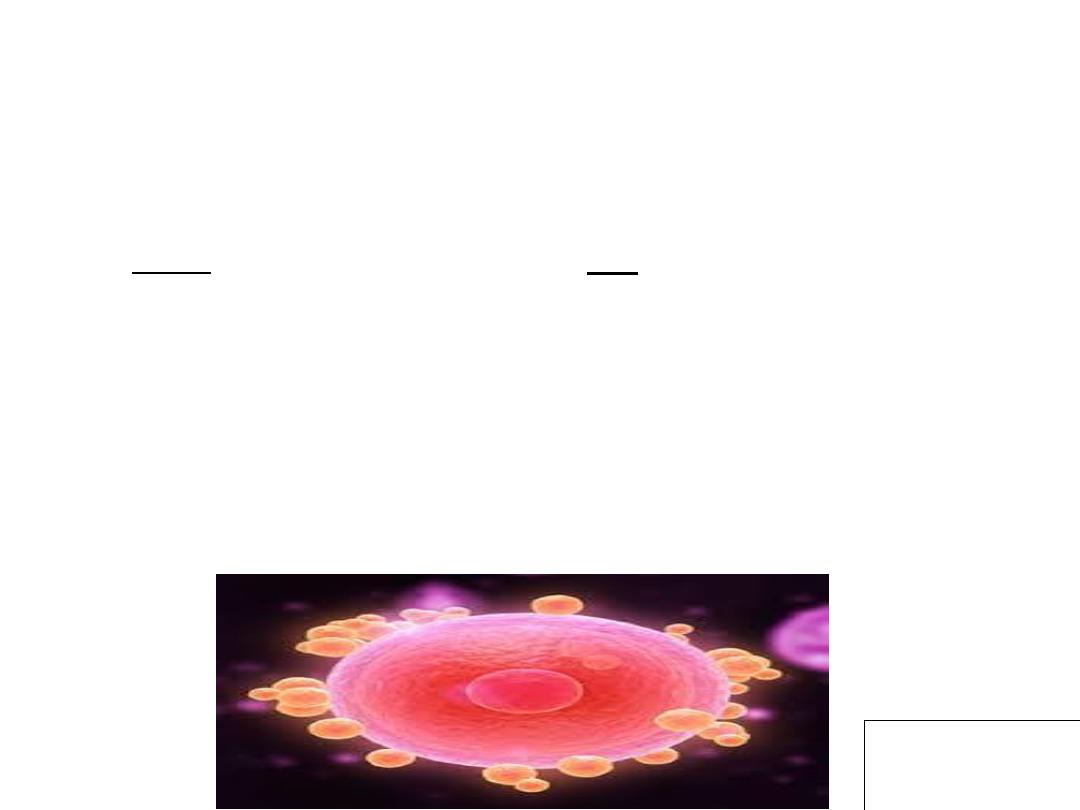
Slide 8
• Some oocytes that reach maturity late in life have been dormant
in the diplotene stage of the fi rst meiotic division
for 40 years
or
more before ovulation------- vulnerable to damage with age and
increase chromosomal abnormalities.
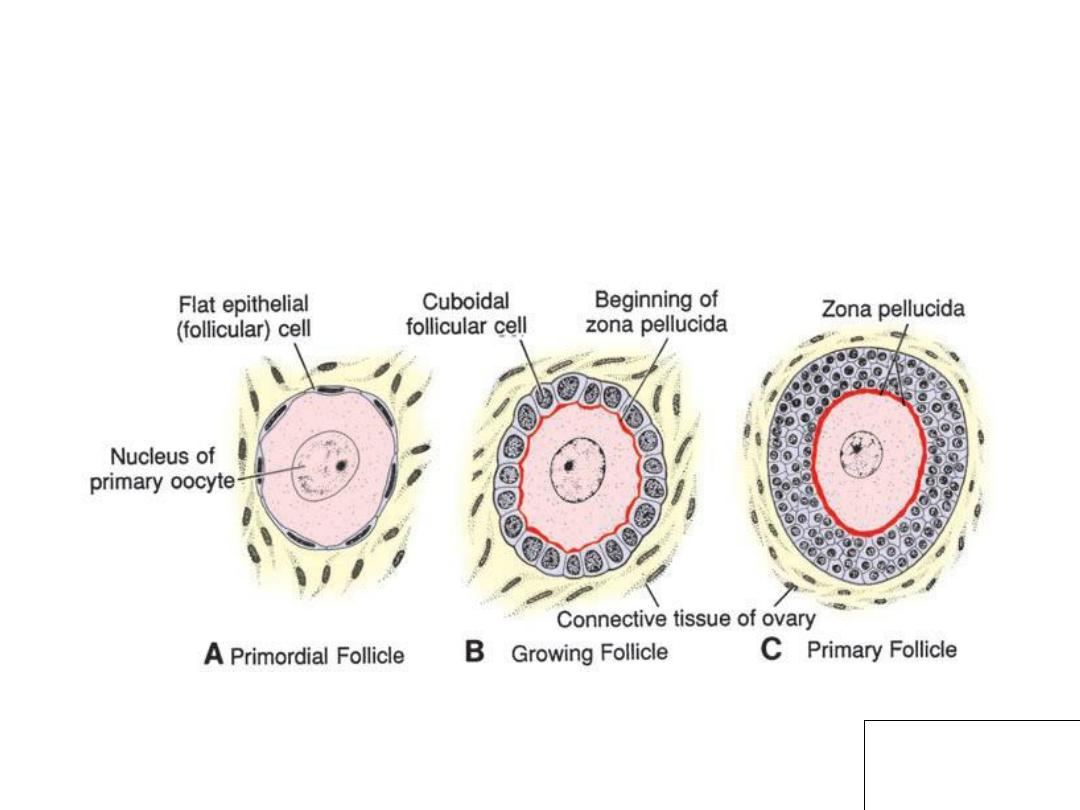
Slide 9
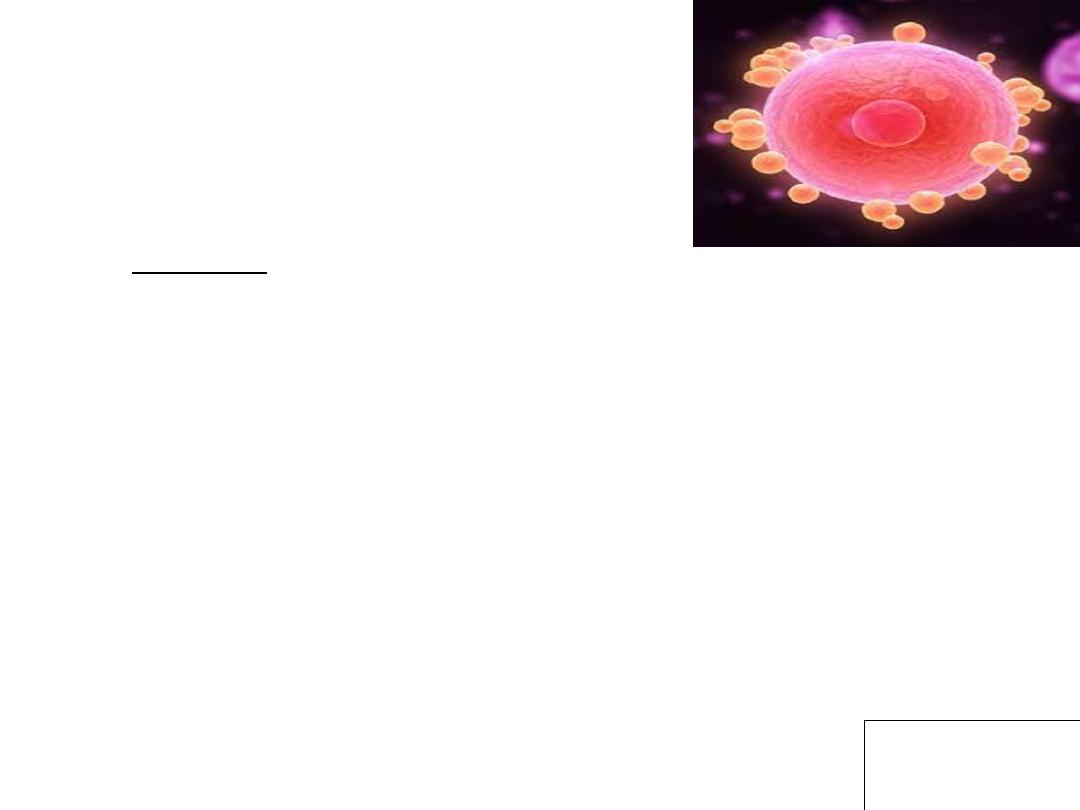
Slide 10
• At puberty, 15 to 20 primordial follicles monthly begin to mature
passing in 3 stages:1-Primary or preantral
2-Secondary or antral or vesicular
3-Preovulatory(Graafian follicle)
• Some of these die, while others begin to accumulate fluid in a
space called the antrum, thereby entering the
antral
or
vesicular stage
•
Fluid continues to accumulate such that, immediately prior to
ovulation, follicles are quite swollen and are called mature
vesicular follicles or Graffi an follicles
. The antral stage is the
longest, whereas the mature vesicular stage encompasses
approximately 37 hours prior to ovulation.
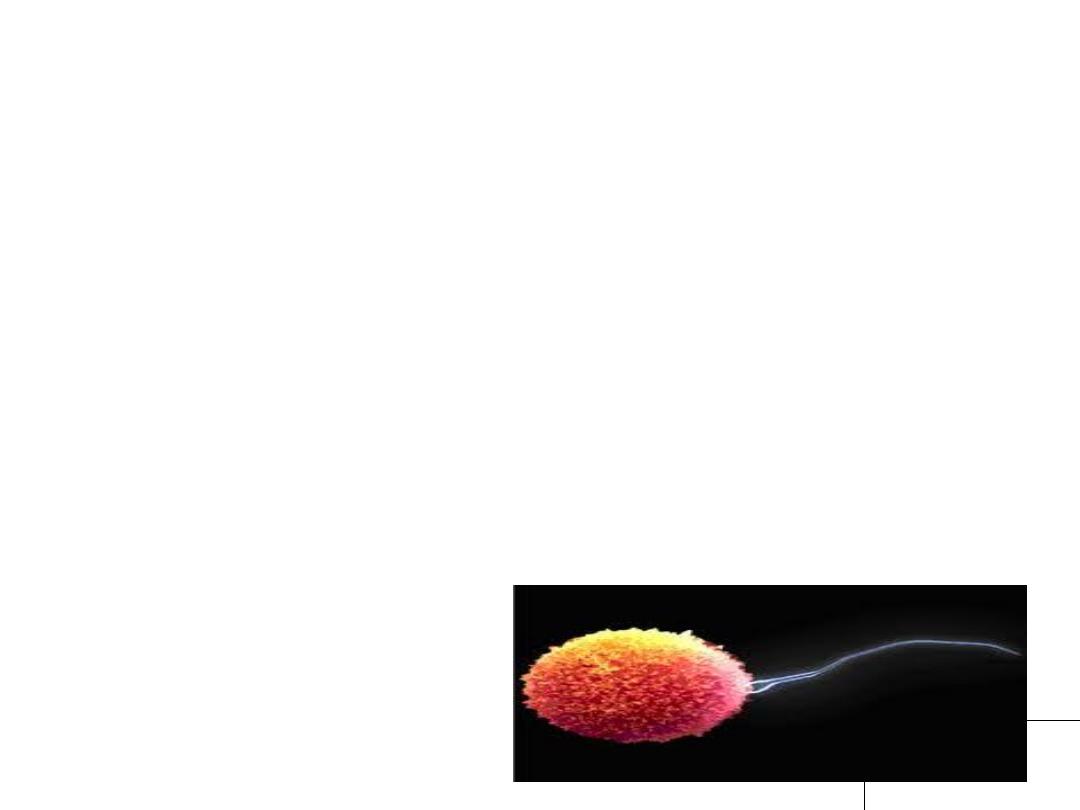
Slide 11
• As primordial follicles begin to grow, surrounding follicular cells
change from flat to cuboidal and proliferate to produce a
stratified epithelium of granulosa cells, and the unit is called a
primary follicle .
• Granulosa cells: rest on a basement membrane separating
them from surrounding ovarian connective tissue (stromal cells)
that form the theca folliculi.
• Also, granulosa cells + the oocyte secrete a layer of
glycoproteins on the surface
of the oocyte, forming the
zona pellucida
.
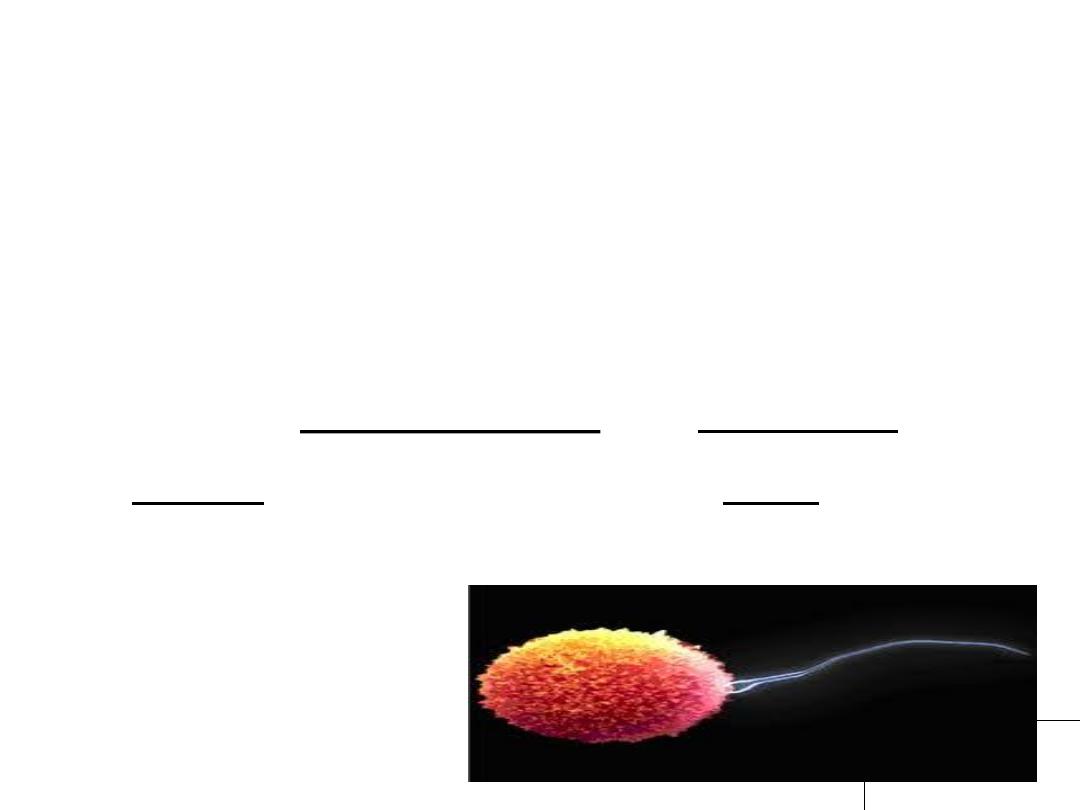
Slide 12
• As follicles continue to grow, cells of the theca folliculi organize
into an inner layer of secretory cells, the
theca interna
, and an
outer fibrous capsule, the
theca externa.
• Also, small, finger-like processes of the follicular cells
extend across the zona pellucida and interdigitate with
microvilli of the plasma membrane of the oocyte. These
processes are important for transport of materials from
follicular cells to the oocyte.
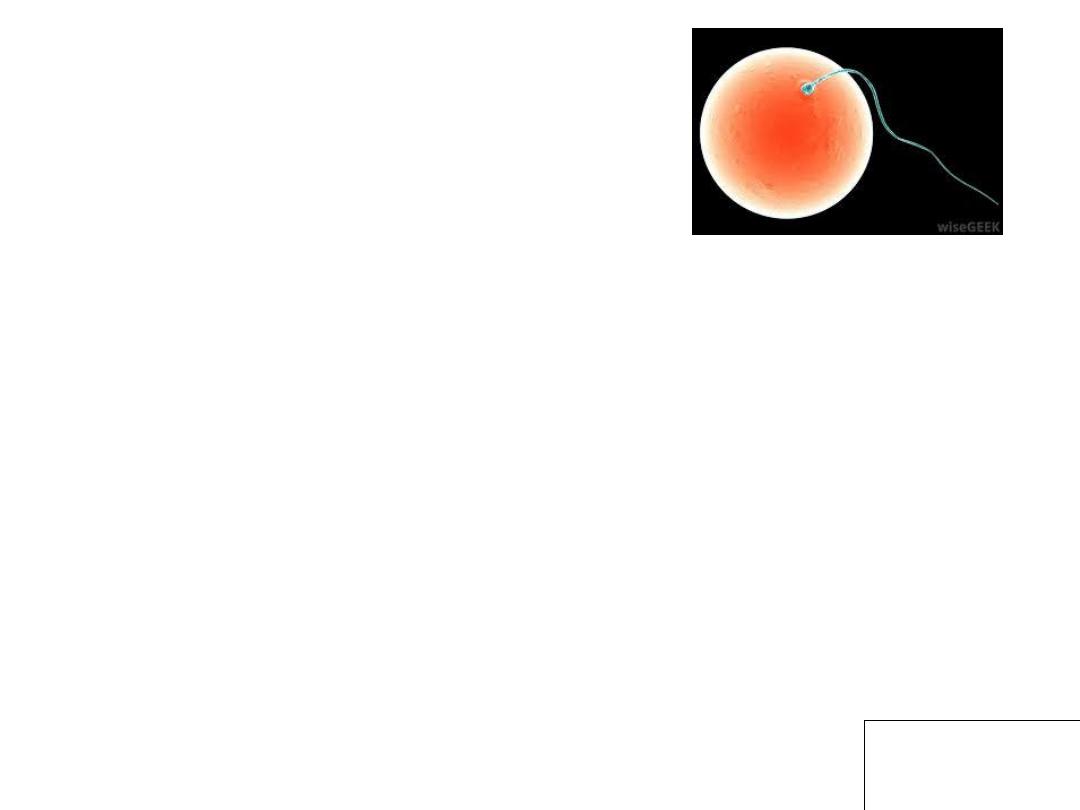
Slide 13
• As development continues, fluid-filled spaces appear between
granulosa cells. Coalescence of these spaces forms the
antrum, and the follicle is termed a vesicular or an antral
follicle
.
•
Initially, the antrum is crescent-shaped, but with time, it
enlarges. Granulosa cells surrounding the oocyte remain intact
and form the
cumulus oophorus
.
• At maturity, the
mature vesicular (Graafian) follicle
may be 25
mm or more in diameter. It is surrounded by the theca interna,
which is composed of cells having characteristics of steroid
secretion, rich in blood vessels, and the theca externa, outer
fibrous capsule layer which gradually merges with the ovarian
connective tissue
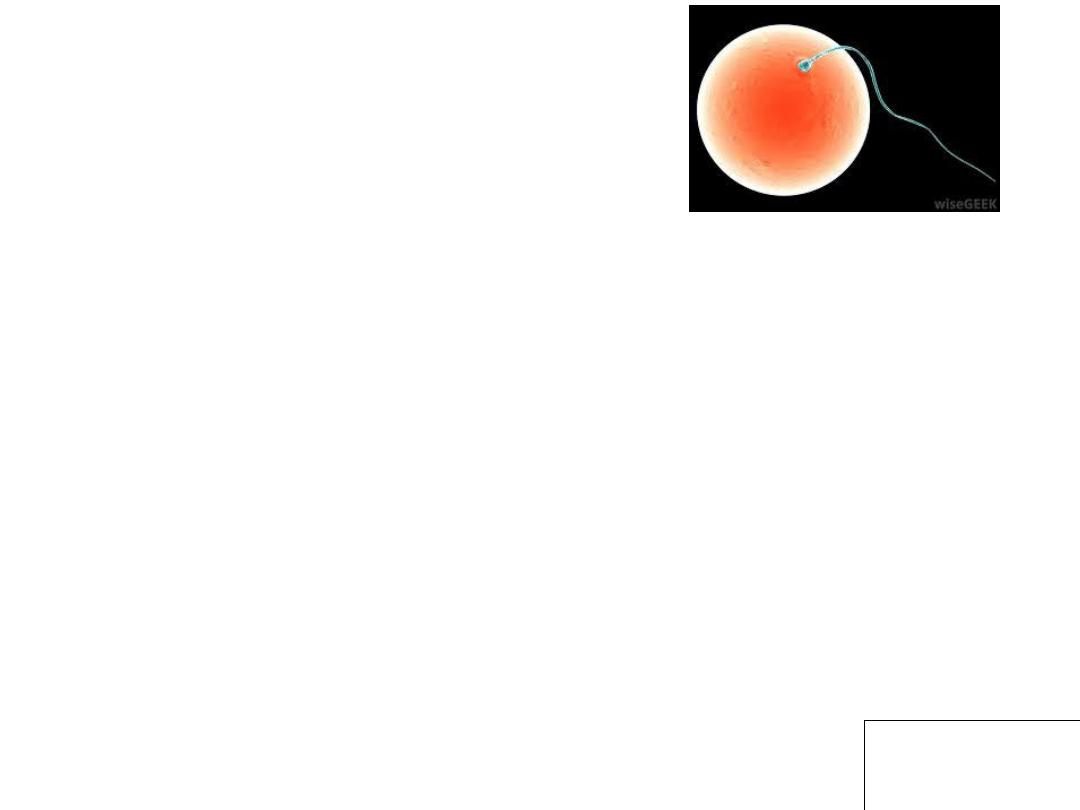
Slide 14
• With each ovarian cycle, a number of follicles begin to develop,
but usually only one reaches full maturity. The others
degenerate and become atretic.
• When the secondary follicle is mature, a surge in
luteinizing
hormone (LH) i
nduces the preovulatory growth phase. Meiosis I
is completed, resulting in formation of two daughter cells of
unequal size, each with 23 double-structured chromosomes
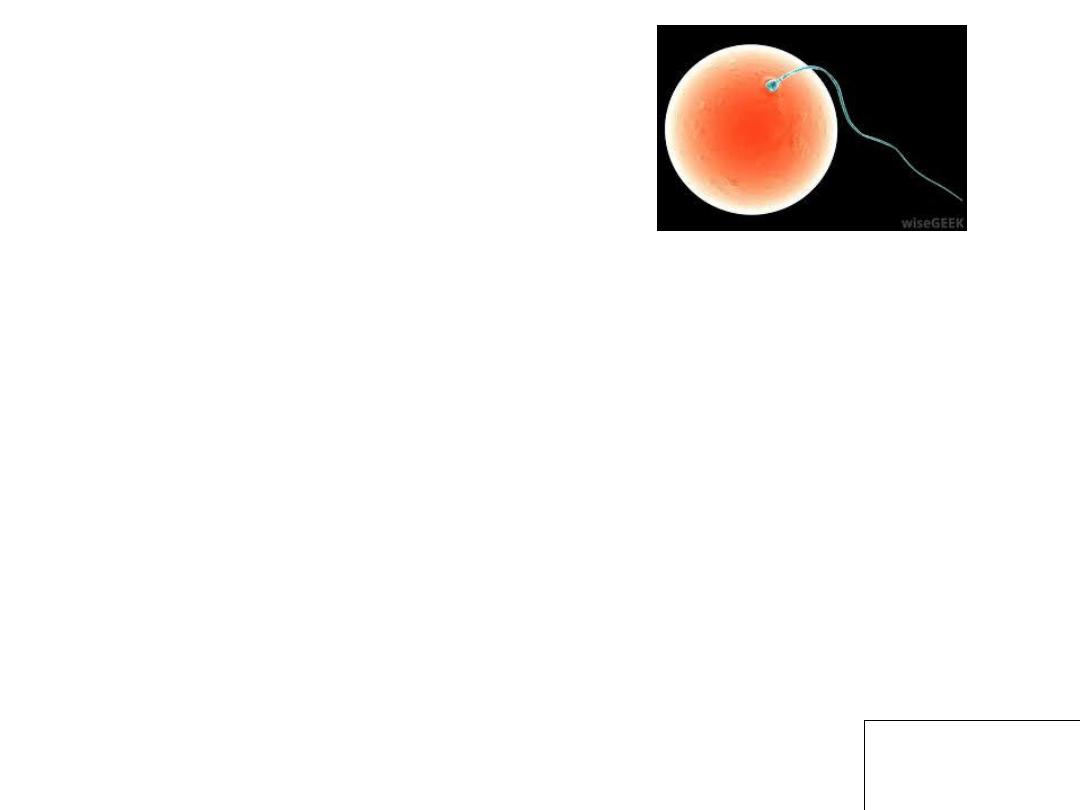
Slide 15
• One cell, the
secondary oocyte,
receives most of the
cytoplasm; the other, the
first polar
body, receives practically
none. The fi rst polar body lies between the zona pellucida and the
cell membrane of the secondary oocyte in the perivitelline space
The cell then enters meiosis II but arrests in metaphase
approximately 3 hours before ovulation. Meiosis II is completed
only if the oocyte is fertilized; otherwise, the cell degenerates
approximately 24 hours after ovulation. The fi rst polar body may
undergo a second division
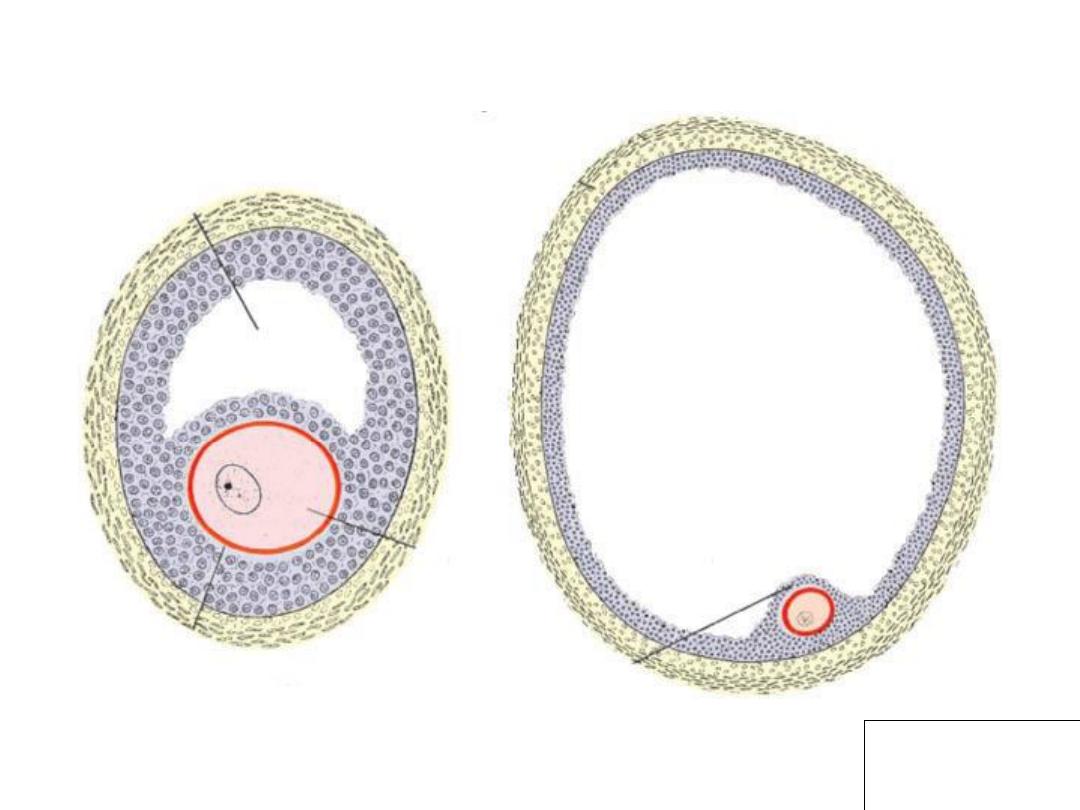
Slide 16
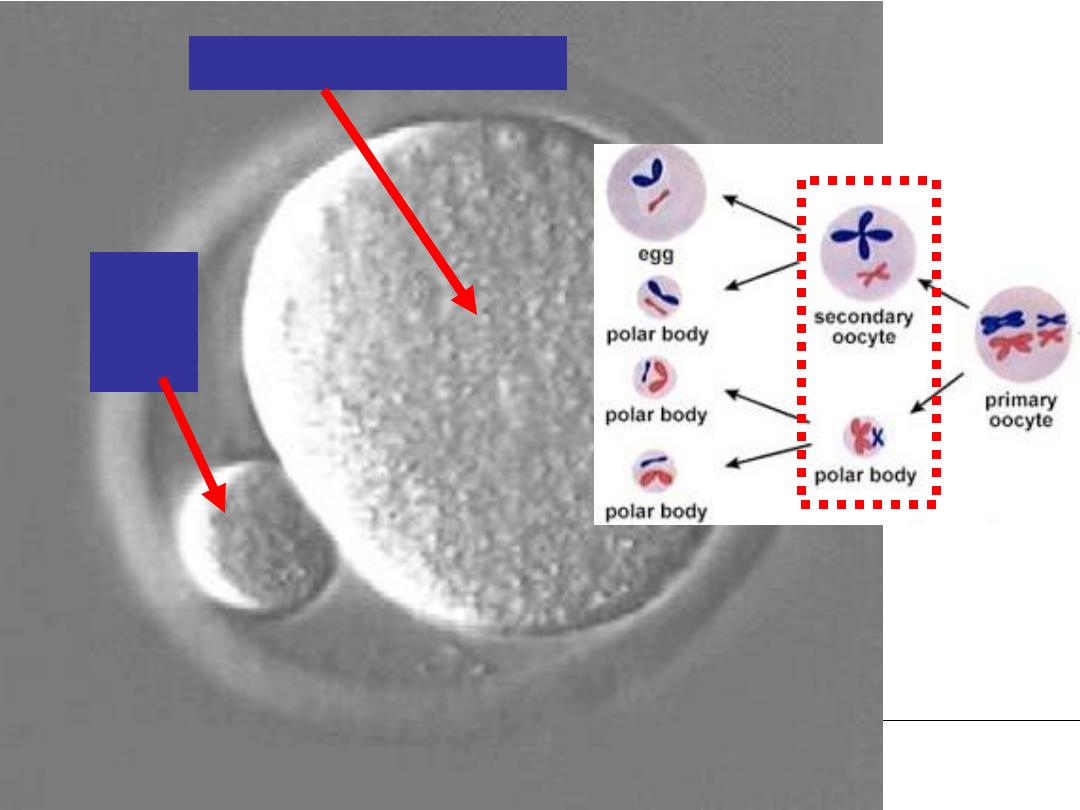
Slide 17
http://www.ucalgary.ca/UofC/eduweb/virtualembryo/PageMill_Images/image145.gif
Secondary oocyte, 1N
Polar
body,
1N
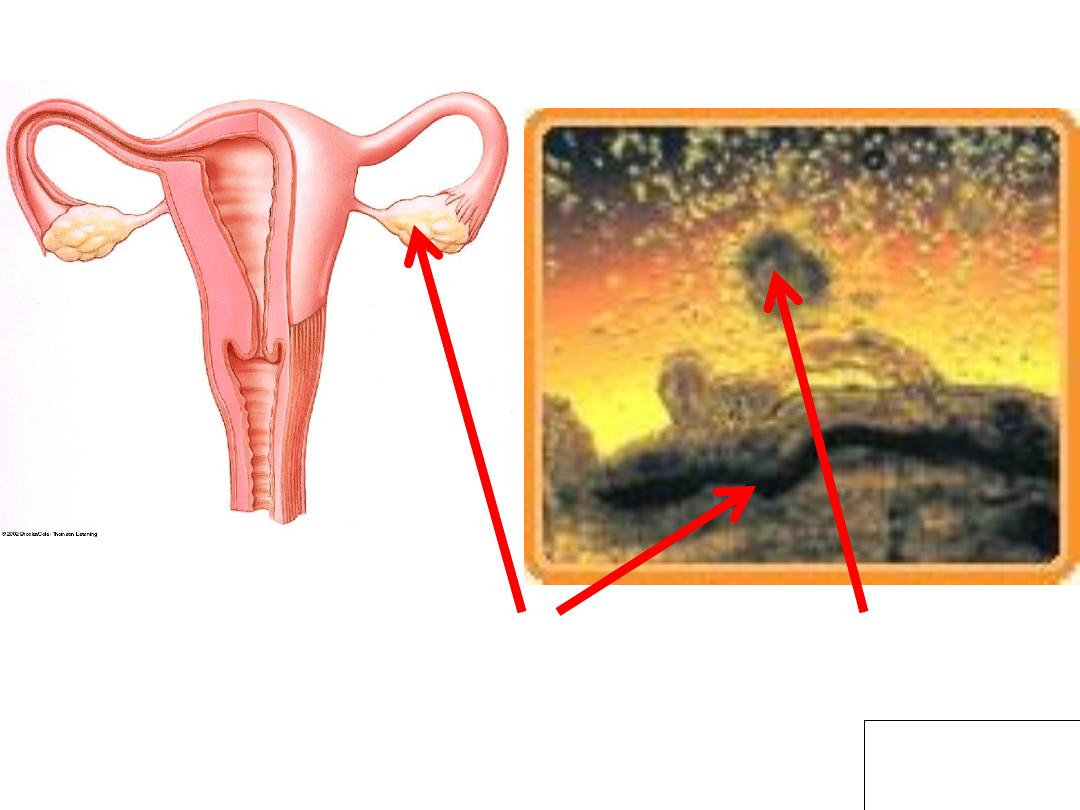
Slide 18
Ovary releases Secondary
Oocyte and Follicle Cells
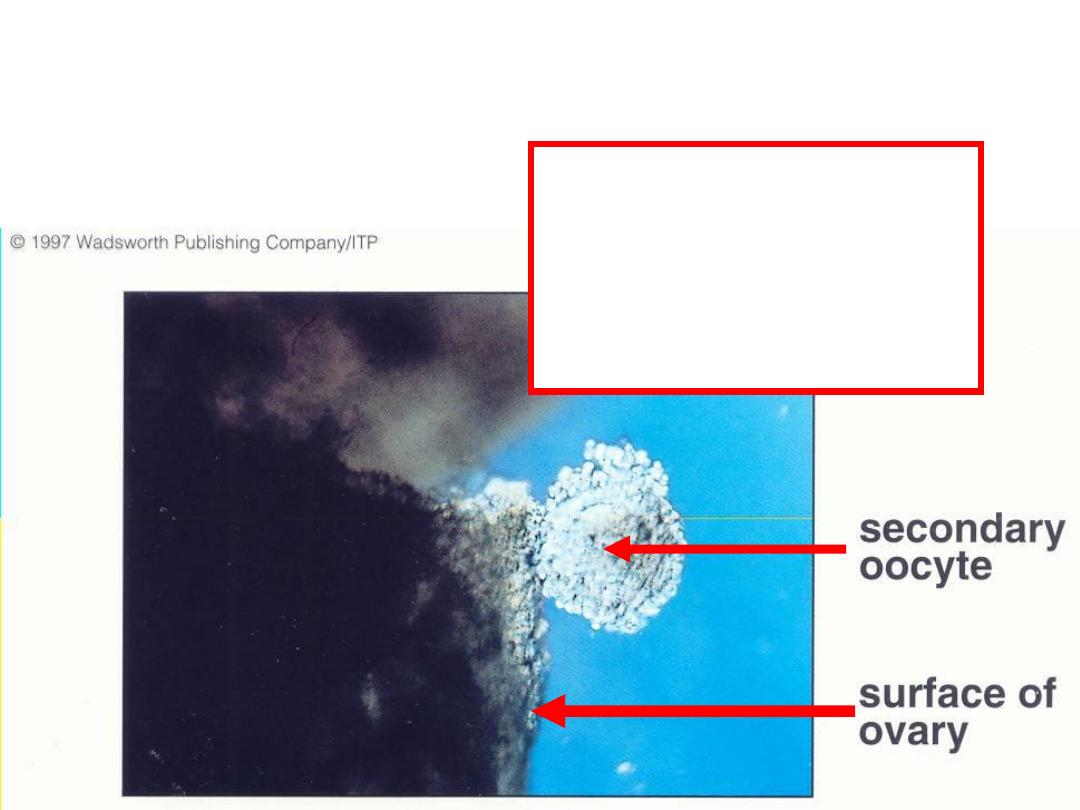
Slide 19
Release of secondary
oocyte (1N)
surrounded by
follicle cells (2N)
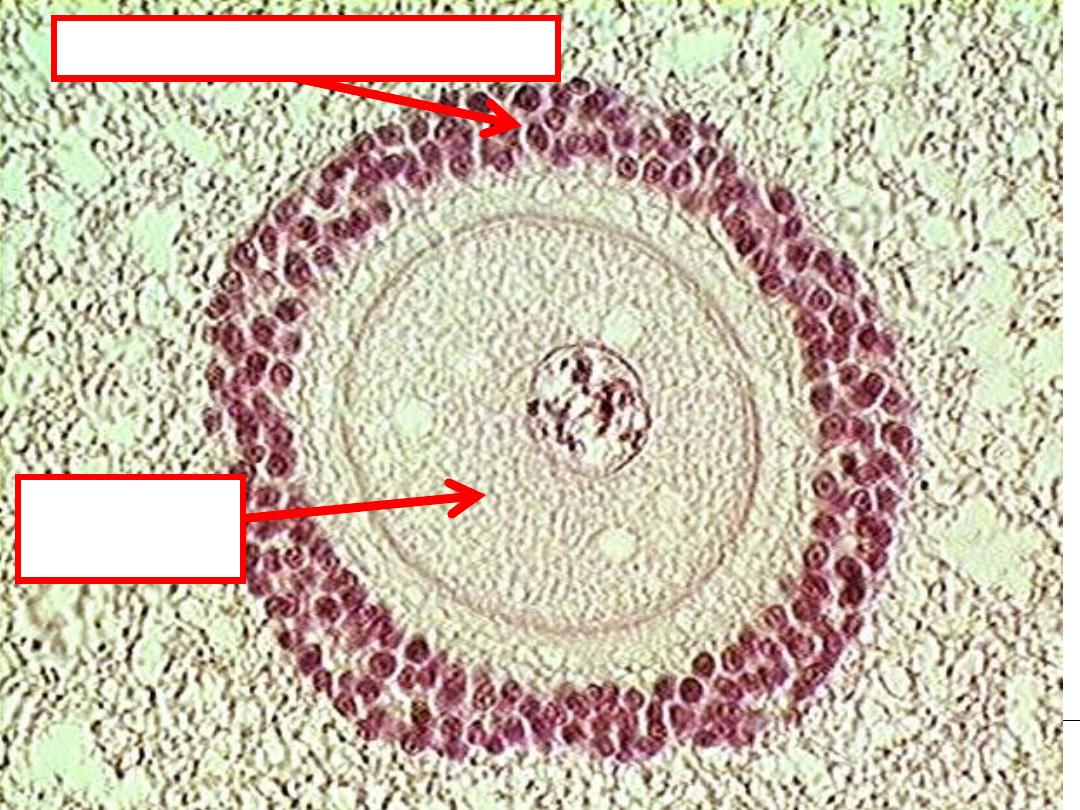
Slide 20
Secondary
oocyte = 1N
Follicle Cells = 2N nurse cells
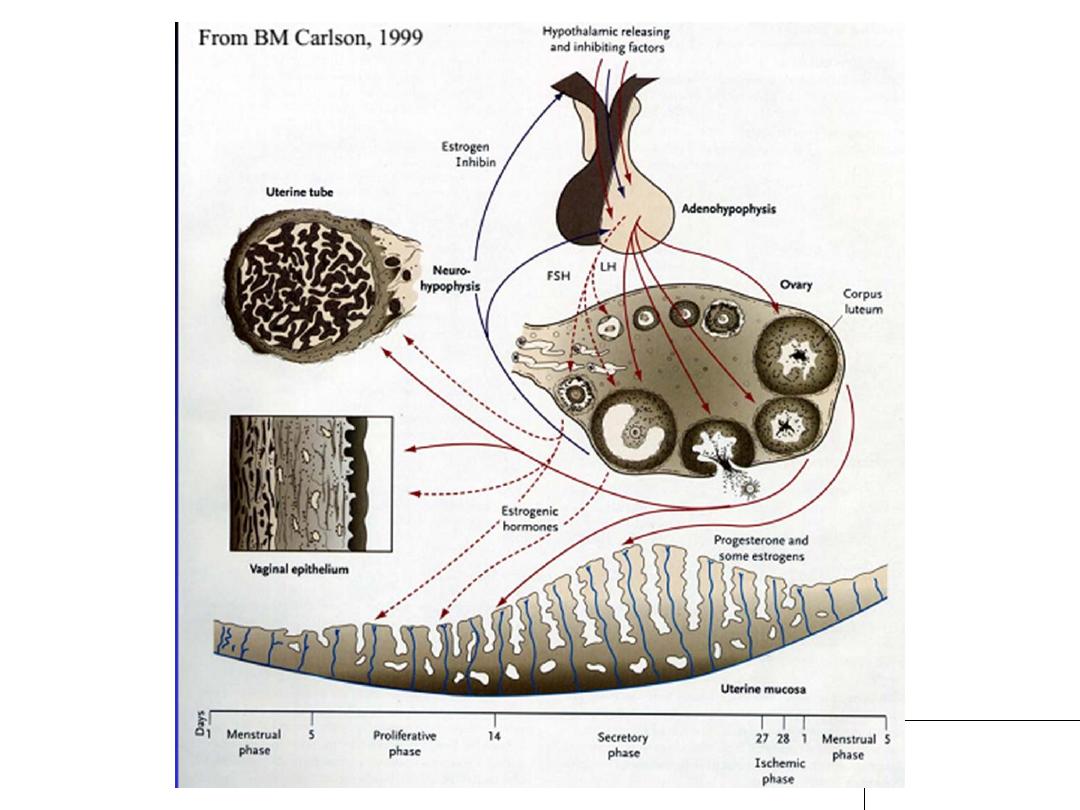
Slide 21
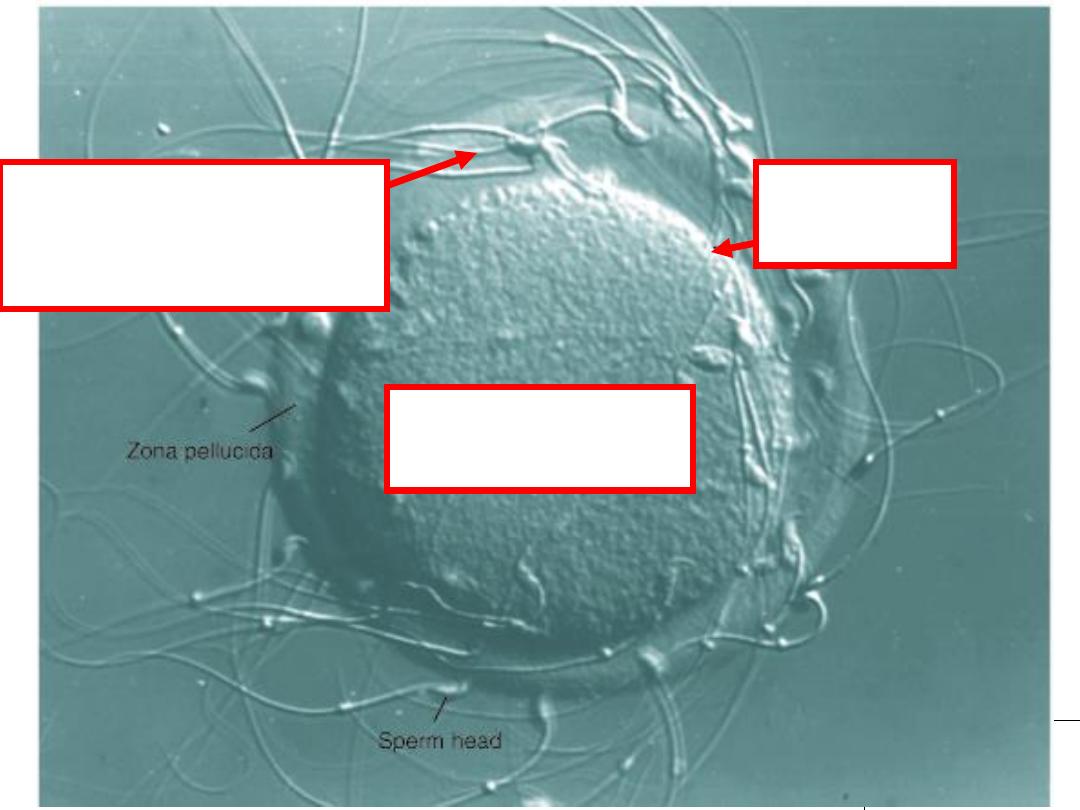
Slide 22
http://www.nature.com/ncb/journal/v3/n2/images/ncb0201_e59_F1.gif
Egg (oocyte)
cytoplasm
Plasma
membrane
Sperm use acrosome
enzymes to penetrate
zona pellucida
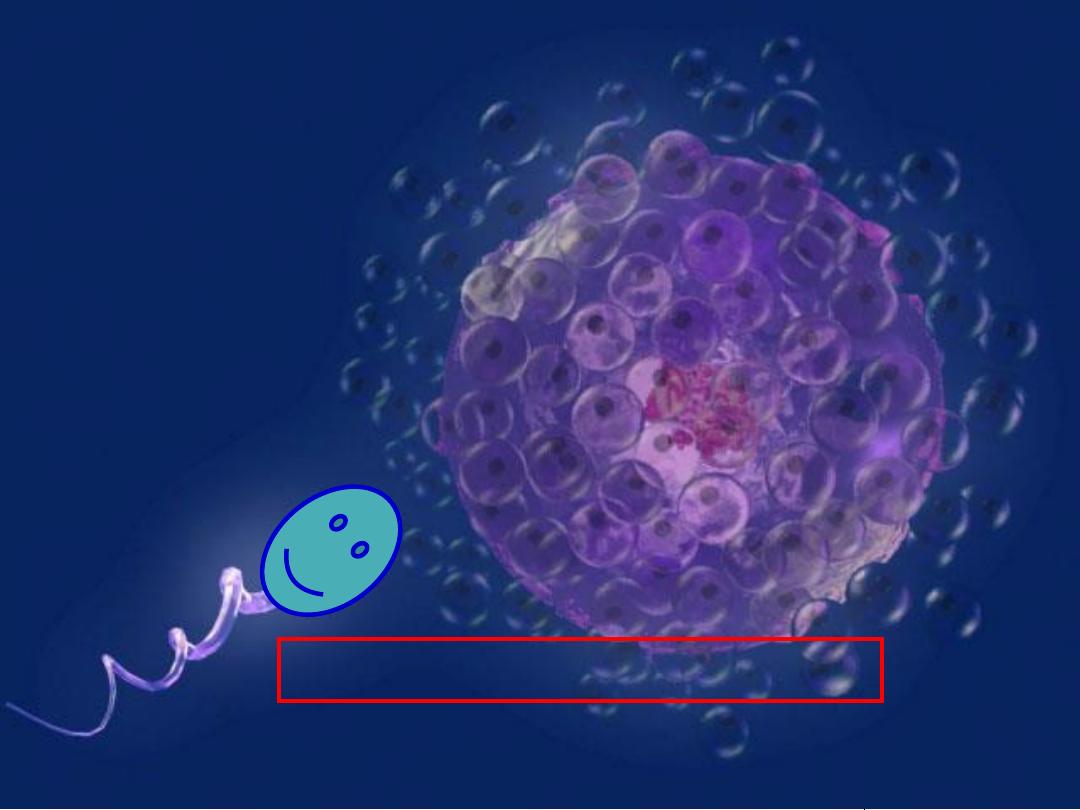
Slide 23
THANK YOU
